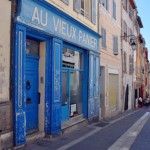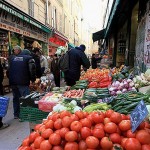Marseille, gateway to the South
The port city known as Massalia to the ancient Greeks has throughout its history welcomed every kind of people. It is France’s “gateway to the East”, to Africa and also the “New World”. As such, the presence of migrants is deeply rooted in its past and has given the city its reputation for being welcoming, vibrant and cosmopolitan. From the 17th century onwards, trade has been controlled by the Genoese, Florentines, Catalans, Swiss, Germans, English and Levantines. The city’s economic development, founded on colonial trade and manufacturing, is built on migrant flows. For a long time, Italians were the largest foreign group together with other Europeans, in some cases political exiles (Russians, Armenians and Spanish), and citizens from the French colonies. In the 20th century, people from the Maghreb, Sub-Saharan Africa and the Comoros Islands made up the principal flows of migration into the city. Whilst, in the aftermath of decolonisation in 1960, the city received a large influx of North Africans, especially Algerians. At the turn of the 21st century, there has been a notable increase in both the quantity and diversity of migration: Romanians, Syrians and Latin Americans are taking their turn to enrich and enlarge this multicultural family. Notwithstanding the unique characteristics of each of these waves of migration, Marseille has integrated the new arrivals without major difficulties and demonstrated a high degree of tolerance.
Info
MIGRANTOUR INTERCULTURAL WALKS ARE NOT CURRENTLY AVAILABLE IN VALENCIA
From 2013 to 2023 the Migrantour project was developed in Marseille by
Association Marco Polo et Association Migrantour Marseille


